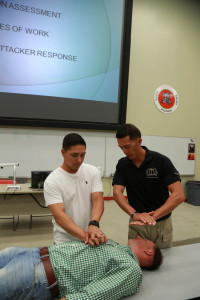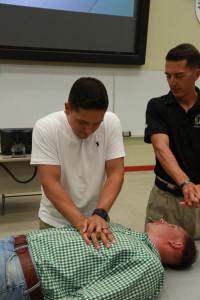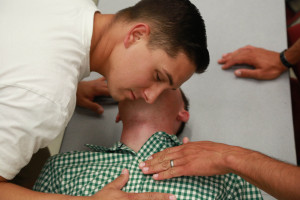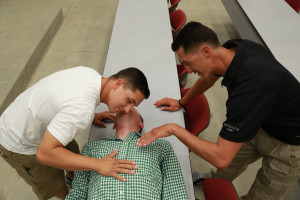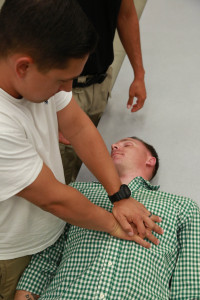Life Saving Steps | Training Procedures
Remove the Patient from the point of injury
- Patient should be moved to the Patient Collection Point (PCP) if possible, or to the nearest zone of safety with access to emergency treatment. Apply necessary treatment.
- Ideally an Emergency treatment bag should be in each classroom with extra supplies and bags positioned in the PCP.
Identify life-threatening bleeding
- Once in a safe treatment area, identify any life threatening bleeding that the patient may have and apply a tourniquet. Properly placing and applying a tourniquet and improvising tourniquets are covered during course.
- Once tourniquet is in place and life threatening bleeding has stopped. You can move onto the secondary injuries.
Check for Secondary
- Assess Patient for secondary injuries associated with mechanism of injury(i.e. -entrance and exit wounds for gunshots).
- Taking steps to rapidly identify and treat individual injuries shall be covered during the course.
Assess for mental alertness and airway
- Assess the Patients alertness to the their surroundings and check for a functional airway. Ask the Patient a question that they must answer to establish alertness level and confirm that they have a functional airway.
- If the Patient is not alert or has a compromised airway, clear any obstruction to airway and place an airway adjunct, I.E. Nasopharyngeal airway, as covered during the course.
Reassess
- Reassess all treatments you have made for the Patient. Check to make sure all treatments are still functioning, and are still in place. Make corrections as needed.
Vital signs
- Collect vital signs on the Patient. A simple heart rate and breaths per min should be enough. Keep record of vitals and reassess every 10 minutes. Pass vital on to Emergency Services once they arrive and care is transferred.
-
The techniques for checking a heart beat on various points of the body, and how to relate those points to a blood pressure value, are covered in the course. If there are more Patients in need of treatment, you can now move to the next Patient in need and return to the prior Patient to reassess in 10 minutes or sooner as needed.



